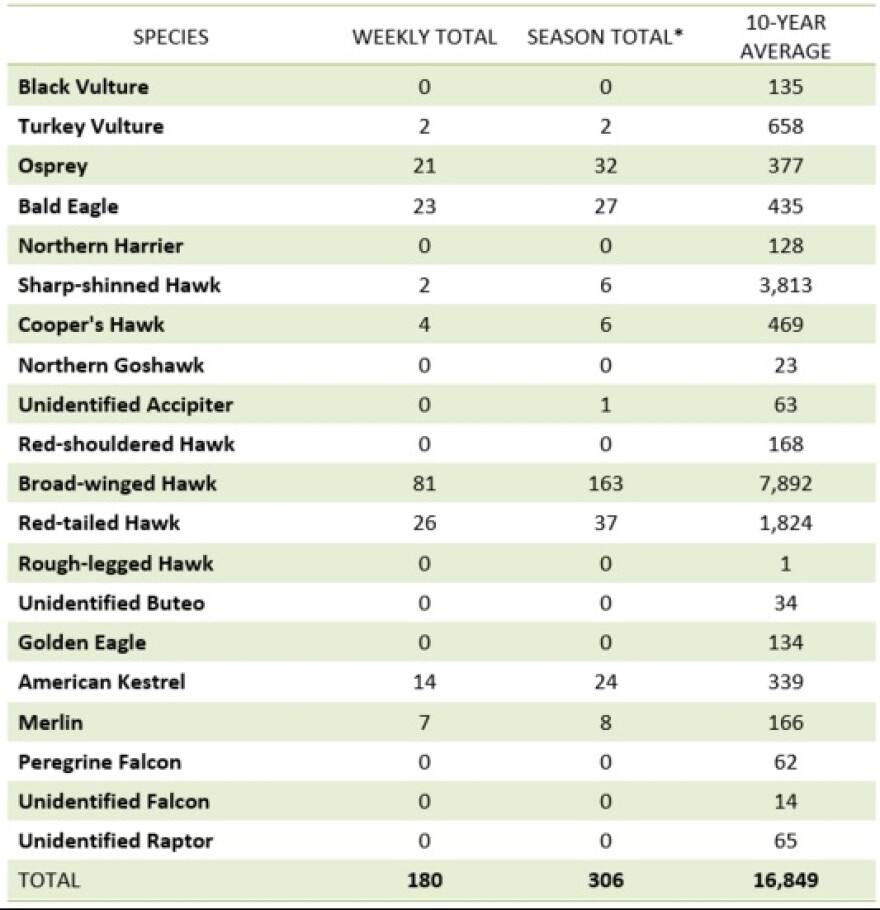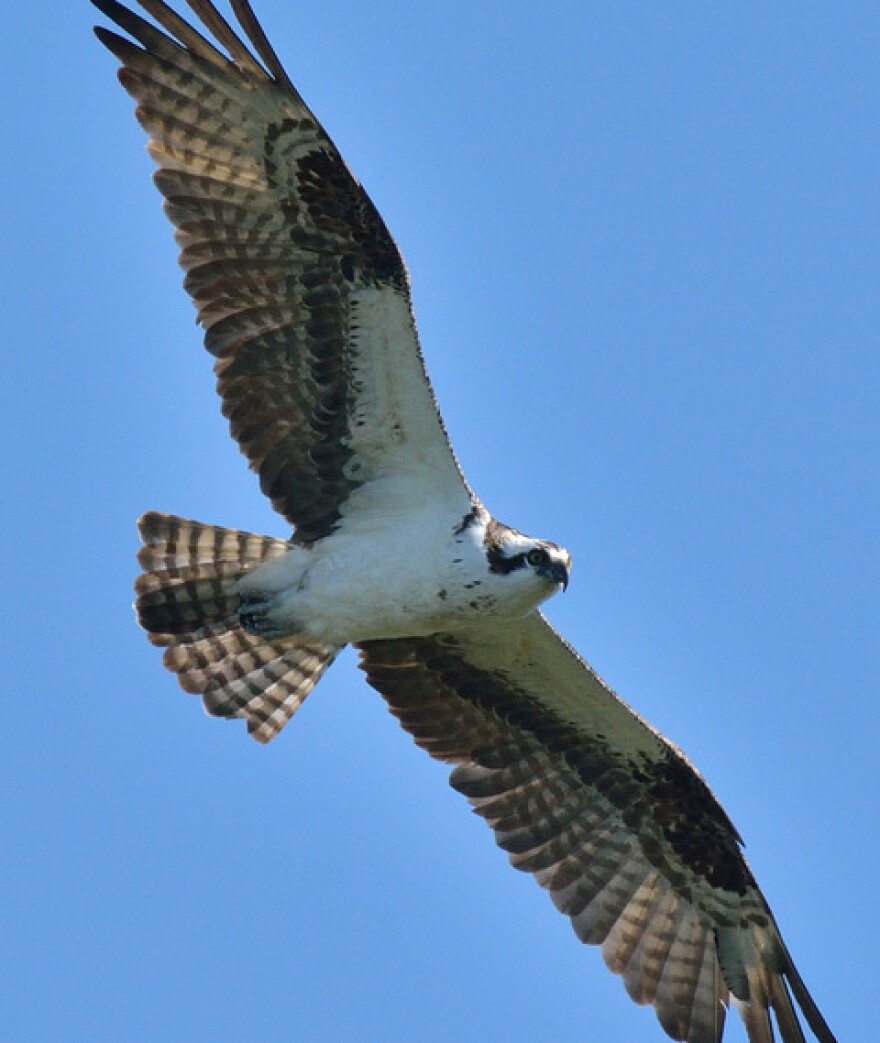- Hawk Mountain's annual autumn migration count began Aug. 15
- So far, more than 300 birds of prey have been recorded
- The Lehigh Gap Nature Center's annual count is also happening
ALBANY TWP., Pa. — Hawk Mountain's official autumn migration count has begun, with more than 300 trekking birds recorded so far.
“An osprey started the count swinging low off the shoulder of five, staying below eye level as it passed to the north,” according to a Wednesday news release from the Berks County sanctuary describing the first day of counting. “ … The lookout was treated to another front that arrived Friday and pushed migrants past Saturday, resulting in 57 migrant s past the lookout.
“The favorable northwest winds around these fronts saw 205 migrants pass the lookout in our first week!”
The longest running raptor migration count in the world, staff and volunteers at the sanctuary, 1700 Hawk Mountain Road, have monitored the autumnal migration since 1934 as part of conservation research efforts. The count, which started Aug. 15 and runs through Dec. 15, generally averages 18,000 raptors with one-day peak counts of more than 3,000 birds during September.
As of Aug. 22, more than 300 raptors were counted, including 163 broad-winged hawks, 37 red-tailed hawks, 24 American kestrels, 32 ospreys and 27 bald eagles.

The Appalachian Mountains provide an ideal passageway for migrating raptors, according to the state Game Commission.
In early autumn, bald eagles journey through the Appalachians to spend the winter in scattered locations throughout eastern North America where rivers and lakes remain ice-free and food is available.Pennsylvania Game Commission
“In early autumn, bald eagles journey through the Appalachians to spend the winter in scattered locations throughout eastern North America where rivers and lakes remain ice-free and food is available,” according to the Game Commission's website. “Other migrating birds of prey may winter throughout the east and along [the] Atlantic coastline or continue traveling south to the Gulf of Mexico and even Central and South America, like the broad-winged hawk, which may end its journey as far south as Argentina.”
Staff and volunteers at Hawk Mountain count migrating raptors twice a year, once in spring and again in the fall. This year’s official spring migration count, which runs from April 1 through May 15, ended with just shy of 1,200 birds of prey recorded — 25% above the 10-year average.
Hawk Mountain isn’t the only organization tracking autumn raptor migration data.
A team of observers and counters from the Lehigh Gap Nature Center earlier this month began this year’s Bake Oven Knob Autumn Hawk Watch, carrying on a more than 60-year tradition of conservation research.
Residents interested in volunteering can reach out to Hawk Mountain and/or the Lehigh Gap Nature Center, for more information.


